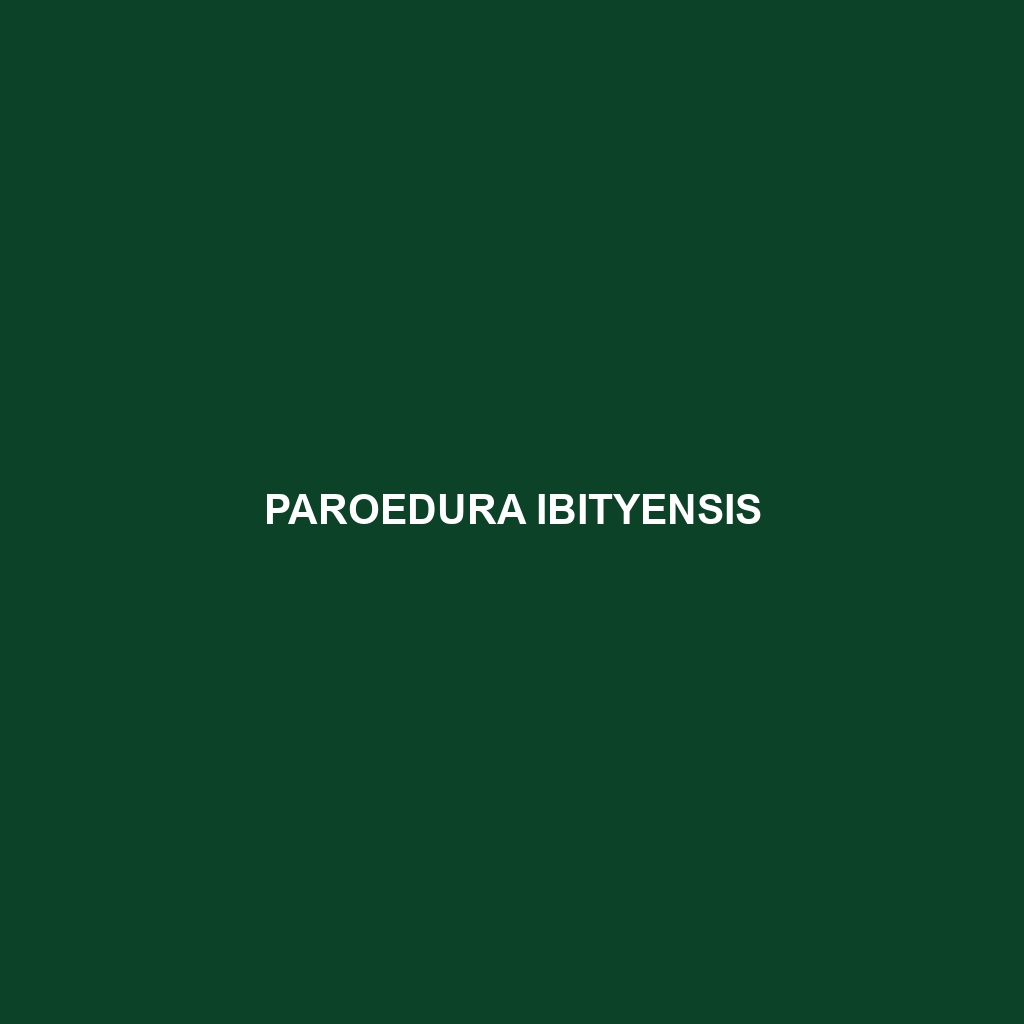Common Name
Paroedura ibityensis
Scientific Name
Paroedura ibityensis
Habitat
The Paroedura ibityensis, commonly known as the Ibity Leaf-Tailed Gecko, is primarily found in the unique ecological zones of Madagascar. This species thrives in subtropical or tropical dry forests and is especially associated with the mountainous regions near the famous Ibity Massif. The surrounding environment includes distinct rock formations, dense scrubs, and patches of grassland where they can easily camouflage. While the gecko prefers the warmer, drier conditions of these areas, it can also be spotted in nearby rainforests that provide a rich diversity of prey. The climate is characterized by a wet season that supports lush vegetation and a dry season that enhances the gecko’s ability to remain hidden from predators, forming a critical aspect of its habitat needs.
Physical Characteristics
The Paroedura ibityensis exhibits a range of remarkable physical features that distinguish it from other gecko species. Typically, adults measure between 12 to 18 cm in length, with a robust, flattened body that aids in camouflage among rocky substrates. Their coloration varies from shades of brown to grey, often with intricate patterns of darker spots that blend seamlessly into their surroundings. One unique feature of this gecko is its elongated tail, which can break off as a defense mechanism, allowing the animal to escape from predators. When regrown, the tail is usually shorter and has distinct coloration that differs from the original, serving as a reminder of their resilient adaptation.
Behavior
The behavior of Paroedura ibityensis showcases an intriguing mix of adaptation and survival strategies. This species is predominantly nocturnal, becoming active at dusk when nighttime temperatures are more favorable. During the day, they can be found resting on rocks or beneath the foliage, employing their excellent camouflage to avoid detection. These geckos are solitary creatures, known to be territorial. Mating rituals are fascinating; males perform elaborate displays that include head-bobbing and body posturing to attract females. These interactions highlight their unique social structures and reproductive strategies.
Diet
The Paroedura ibityensis is an insectivore, primarily feeding on a diet composed of various insects and small invertebrates. Their diet includes crickets, beetles, and caterpillars, which they hunt using their keen sense of sight. The gecko employs a sit-and-wait strategy, often remaining motionless until prey comes within striking distance. This feeding pattern not only demonstrates their predatory skills but also reflects their adaptability to the rich biodiversity found within their habitat.
Reproduction
Reproduction in Paroedura ibityensis occurs during the warmer months, coinciding with the rainy season when food is abundant. Females lay eggs that are typically hidden in crevices or buried among leaf litter to protect them from predators. The incubation period lasts about 60 days, after which the young hatch with typical colors that help them blend into their surroundings. Parental care is minimal, with hatchlings becoming independent immediately after birth, showcasing their innate survival instincts.
Conservation Status
The current conservation status of Paroedura ibityensis is classified as vulnerable due to habitat loss primarily caused by deforestation and land conversion for agriculture. The unique features of Madagascar’s biodiversity make this species particularly susceptible to environmental changes. Conservation efforts are essential, including habitat preservation and restoration, to ensure the survival of this species. Organizations are working to educate local communities about the importance of preserving their natural environments, emphasizing the ecological significance of species like the Ibity Leaf-Tailed Gecko.
Interesting Facts
One of the most captivating aspects of Paroedura ibityensis is its ability to adapt to its environment. Unlike many other gecko species, it possesses the remarkable skill of being able to change its skin texture slightly to enhance camouflage. This method not only aids in hunting but also serves to evade potential threats. Additionally, unlike some reptiles that regenerate limbs, Paroedura ibityensis‘s unique tail regeneration is a fascinating aspect of its biology, allowing it to escape predation effectively.
Role in Ecosystem
The Paroedura ibityensis plays a significant role in its ecosystem as a predator of insects and small invertebrates, helping to control their populations. By regulating these species, it contributes to the health and balance of its habitat. Furthermore, as prey for larger predators, these geckos are vital to the food chain, linking various trophic levels. Understanding the ecological role of the Ibity Leaf-Tailed Gecko underscores the necessity for conservation efforts, as the health of its population reflects the overall state of the environment in which it resides.
